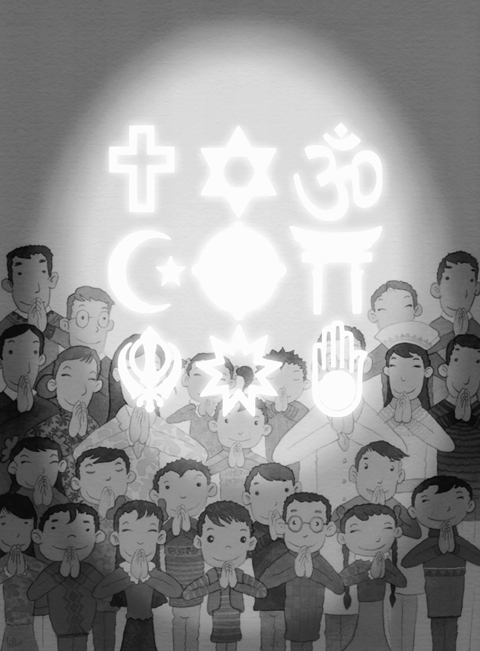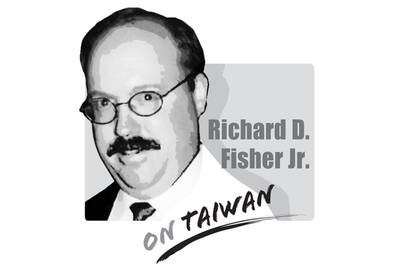After starting the day with prayers and songs in honor of the Prophet Mohammed's birthday, the students at the Madrasah al-Irsyad al-Islamiah in Singapore turned to the secular. An all-girls chemistry class grappled with compounds and acids, while other students focused on English, math and other subjects from the national curriculum.
Teachers exhorted their students to ask questions. Some, true to the school's embrace of new technology, gauged their students' comprehension with individual polling devices.
“It's like American Idol,“ said Razak Mohamed Lazim, the head of al-Irsyad, which means “rightly guided.”

A reference to the reality TV program in relation to an Islamic school may come as a surprise. But Singapore's Muslim leaders see al-Irsyad, with its strict balance between religious and secular studies, as the future of Islamic education, not only in Singapore but elsewhere in Southeast Asia.
Two madrasah in Indonesia have adopted al-Irsyad's curriculum and management, attracted to what they say is a progressive model of Islamic education in tune with the modern world. For them, al-Irsyad is the counterpoint to many traditional madrasah that emphasize religious studies at the expense of everything else. Instead of preaching radicalism, the school's in-house textbooks praise globalization and international organizations like the UN.
Leaders in Islamic education here rue the fact that, in much of the West, madrasah everywhere have been broad-brushed as militant hotbeds where students spend days learning the Koran by heart. Still, they were relieved that no terrorism suspect in the region in recent years was a product of Singapore's madrasah, though some suspects were linked to madrasah in Indonesia and other Southeast Asian countries. That association deepened a long-running debate over the nature of Islamic education.
“The Muslim world in general is struggling with its Islamic education,” Razak said, adding that Islamic schools had failed to adapt to the modern world. “In many cases, it's also the challenge the Muslim world is facing. We are not addressing the needs of Islam as a faith that has to be alive, interacting with other communities and other religions.”
In Indonesia, most Islamic schools still pay little attention to secular subjects, believing that religious studies are enough, said Indri Rini Andriani, a former computer programmer who is the principal of al-Irsyad Satya Islamic School, one of the Indonesian schools that model themselves on the school here.
“They feel that conventional education is best for the children, while some of us feel that we have to adjust with advances in technology and what’s going on in the world,” Indri said.
Here, the Islamic Religious Council of Singapore, a statutory board that advises the government on Muslim affairs, gave al-Irsyad a central spot in its new Islamic center. Long the top academic performer among the country’s six madrasah, al-Irsyad was chosen to be in the center as “a showcase,” said Razak, who is also an official at the religious council.
The school's 900 primary and secondary-level students follow the national curriculum of the country's public schools while also taking religious instruction. To accommodate both, the school day is three hours longer than at the mainstream schools.
Mohamed Muneer, 32, a chemistry teacher, said most of his former students had gone on to junior colleges or polytechnic schools, while some top students attended the National University of Singapore.
“Many became administrators, some are teaching and some joined the civil service,” he said.
At the cafeteria, Ishak bin Johari, a 17-year-old who wants to become a newspaper reporter, said the balance between the secular and religious would help the school's graduates “lead normal Singaporean lives compared to other madrasah students.”
That balance resulted, like many things in this country, from pressure by the government. Singapore's madrasah — historically the schools for ethnic Malays who make up about 14 percent of the country’s population — experienced a surge in popularity in the 1990s along with a renewed interest in Islam.
But that surge, coupled with the madrasah's poor record in nonreligious subjects, high dropout rates and graduation of young people with few marketable job skills, worried the government. It responded by making primary education at public schools compulsory in 2003, allowing exceptions like the madrasah, provided they met basic standards by next year. If they fail, they will have to stop educating primary schoolchildren.
Last year, the first time all six madrasah were required to sit for national exams at the primary level, two failed to meet minimal standards, though they still had two more years to pass.
Al-Irsyad, which was the first to alter its curriculum, outperformed the other madrasah. But neither it nor the others made any of the lists of best performing schools or students compiled by the Education Ministry in Singapore.
Mukhlis Abu Bakar, an expert on madrasah at the National Institute of Education who also was a member of al-Irsyad’s management committee in the 1990s, said the madrasah still had a long way to go to catch up with mainstream schools. While Singapore's teachers are among the most highly paid civil servants, the madrasah have had trouble attracting teachers because they rely only on tuition and donations, he said.
“I think al-Irsyad has not achieved a level where I would say it is a model for Islamic education, but ... the system it has in place could become one,” he said.
Still, it began to draw students who would not have attended a madrasah otherwise. Noridah Mahad, 44, said she had wanted to send her two older children to madrasah but worried over the quality of education. With al-Irsyad's adoption of the national curriculum, she felt no qualms in sending her third child.
“Here they teach many things other than Islam,” she said.
Al-Irsyad said it was in talks to export its model to madrasah in the Philippines and Thailand. In Indonesia, Dahlan Iskan, the chairman of Jawa Pos Group, one of the country's biggest media companies, opened a school modeled on Singapore's. And a conglomerate, the Lyman Group, backed al-Irsyad Satya.
Poedji Koentarso, a retired diplomat, led the search for Lyman, visiting madrasah all over Indonesia, Malaysia and Singapore.
“We shopped around,” he said. “It was a difficult search in the sense that often the schools were very religious, too religious.”

On Sept. 3 in Tiananmen Square, the Chinese Communist Party (CCP) and the People’s Liberation Army (PLA) rolled out a parade of new weapons in PLA service that threaten Taiwan — some of that Taiwan is addressing with added and new military investments and some of which it cannot, having to rely on the initiative of allies like the United States. The CCP’s goal of replacing US leadership on the global stage was advanced by the military parade, but also by China hosting in Tianjin an August 31-Sept. 1 summit of the Shanghai Cooperation Organization (SCO), which since 2001 has specialized
In an article published by the Harvard Kennedy School, renowned historian of modern China Rana Mitter used a structured question-and-answer format to deepen the understanding of the relationship between Taiwan and China. Mitter highlights the differences between the repressive and authoritarian People’s Republic of China and the vibrant democracy that exists in Taiwan, saying that Taiwan and China “have had an interconnected relationship that has been both close and contentious at times.” However, his description of the history — before and after 1945 — contains significant flaws. First, he writes that “Taiwan was always broadly regarded by the imperial dynasties of
The Chinese Communist Party (CCP) will stop at nothing to weaken Taiwan’s sovereignty, going as far as to create complete falsehoods. That the People’s Republic of China (PRC) has never ruled Taiwan is an objective fact. To refute this, Beijing has tried to assert “jurisdiction” over Taiwan, pointing to its military exercises around the nation as “proof.” That is an outright lie: If the PRC had jurisdiction over Taiwan, it could simply have issued decrees. Instead, it needs to perform a show of force around the nation to demonstrate its fantasy. Its actions prove the exact opposite of its assertions. A
A large part of the discourse about Taiwan as a sovereign, independent nation has centered on conventions of international law and international agreements between outside powers — such as between the US, UK, Russia, the Republic of China (ROC) and Japan at the end of World War II, and between the US and the People’s Republic of China (PRC) since recognition of the PRC as the sole representative of China at the UN. Internationally, the narrative on the PRC and Taiwan has changed considerably since the days of the first term of former president Chen Shui-bian (陳水扁) of the Democratic